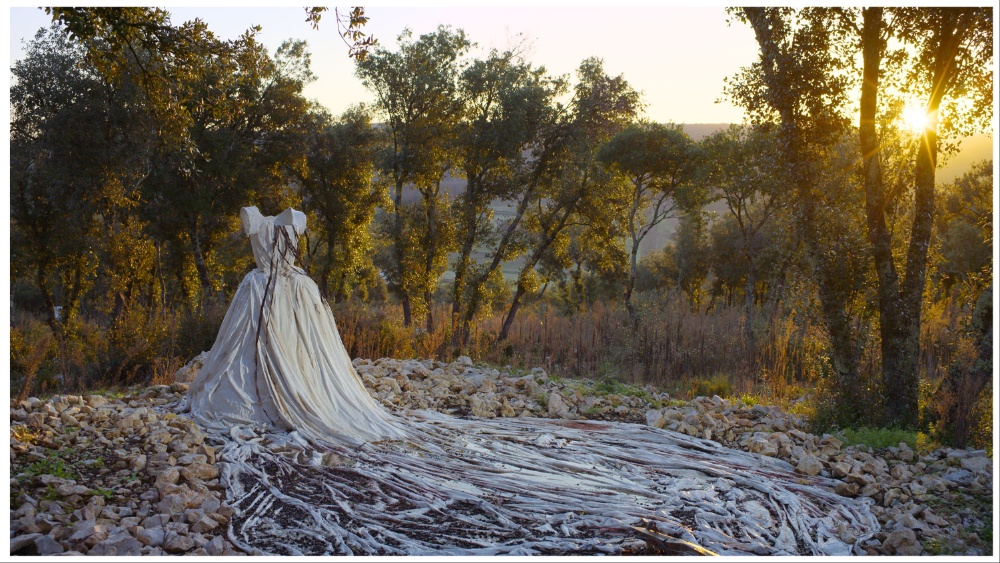
When audiences consider 3D as a medium, the abiding image seems to be of items popping out from the screen — a limb here in “Jaws 3D,” a dildo there in “Jackass 3D” — and perhaps that is indeed how most filmmakers have used the medium. Not enough directors have capitalized on the ability of 3D to convey a sense of physical depth; fewer still have seized on the possibility of adding philosophical depth. Thank goodness, then, for Wim Wenders. The first of two new films by the German veteran in this year’s Cannes official selection, “Anselm” is a tour de force 3D 6K portrait of the artist Anselm Kiefer, both rich in ideas and breathtaking in technical execution.
Though undoubtedly a powerful confrontation with some of the biggest themes art can tackle — mortality, permanence, being, nothingness, all the hits — “Anselm” remains an accessible experience, partly because of its manageable 93-minute runtime and partly because of its endlessly engaging imagery. There’s no reason any reasonably curious audience shouldn’t be able to switch on to its considerable pleasures.
Wenders’ palette of documentary subjects — ranging from the Buena Vista Social Club to Pina Bausch to Pope Francis — has always suggested a lively and curious mind, but that curiosity has never been more essential than it is here. More a portrait of Kiefer’s work than a standard biographical study of Kiefer himself, “Anselm” is a very particular study of a singular man’s soul, told through images of his oeuvre, augmented by sensational use of archive rendered in 3D. There are no tedious talking-head interviews with art-world luminaries or former teachers claiming to have foreseen his genius, and this is a blessed absence.
Structurally, the film’s organizing principle is a series of explorations of Kiefer’s artistic preoccupations during periods spent in different studios, but this isn’t rigidly imposed. With a lyrical lightness of touch, seasonal change also marks the passage of time, conjuring a temporal sense more cyclical than linear. Time here is the fourth dimension: While the 3D visuals grab your attention immediately, “Anselm” is a film deeply concerned with chronology and memory. It is deeply moving to re-encounter sunflowers seen early in the film in a frozen winter field, this time bathed in golden light as a younger version of Kiefer (played by Anton Wenders) tentatively makes his way through them.
There is even something of “2001: A Space Odyssey” to scenes where Kiefer’s younger and older incarnations explore ornate but empty rooms in the final act. The effect is intimate, like we’re trespassing in someone else’s core memories. This isn’t a portrait of the artist as a young, middle-aged or old man: It’s every past self overlapping, sometimes literally, as Wenders brilliantly overlays images to function as both eye and mind’s eye, simultaneously suggesting what is both seen and thought.
The crisp 3D 6K footage through which this is all realised isn’t merely decorative or showy, but so sharp and photoreal as to make the viewer swear they can feel warm sunshine on their skin, or inhale the fresh scent of furniture polish; you positively itch to run a curious finger along the gilded edge of an ornate picture frame. None of which is to suggest the film is focussed on aesthetics at the expense of social context, as Wenders isn’t afraid to explore difficult subjects in his compatriot’s back catalogue — in particular, his sometimes controversial reckonings with the Holocaust.
Kiefer’s stance on this ties into his wider work: There’s the heavy sense of humanity as interconnected and therefore collectively culpable. He is determined to resist the individualist approach through which people convince themselves that they, surely, would have been a heroic part of the resistance. The impression of humankind that emerges here from Kiefer’s work is one of an Icarus figure who has gotten away with flying close to the sun so far, and is determined to see how much closer they can get. Kiefer’s mind is presented as supremely supple, able to confront and contain dangerous ideas without cracking.
It’s easy for films about the importance of creativity to present it as a purely generative act, but Wenders carves out space to show how destruction can also be part of the artist’s practice. We see Kiefer using flamethrowers to torch and distress his materials, and experience the brutal beauty of molten metal destroying the surfaces Kiefer ladles it onto. Plenty of terrible crimes against cinema have been committed in the name of “immersive” art, but this focus on material helps “Anselm” to feel immersive in the best sense: The stereoscopy and sharp focus push our noses into the physical texture of the work, while also pulling us forwards and backwards through time. It’s all rather overwhelming, and appealingly tactile, with the rendering of archival footage into 3D a particular coup. Only by the end of the film do we gain a full sense of the echoes and leitmotifs threaded throughout; it would handsomely repay repeat viewings.













